Kreuzberg is possibly
Berlin’s most notorious district, and it definitely qualifies as its
most colourful area. Here, in historic tenement blocks that are slowly
but surely being renovated, Turkish families live next door to drop-outs
and alternatives, artists and students. Social tensions, still
characteristic of Kreuzberg today, make this a varied and interesting
district – but at the same time a problematic one. The neighbouring
district of Schöneberg is markedly quieter; this part of town is not as
experimental as Kreuzberg, neither is it as elegant as Charlottenburg –
here Berlin is simply enjoyed by its inhabitants. Winterfeldtplatz is
surrounded by many inviting pubs, and in the area around Nollendorfplatz
entire roads have been taken over and transformed by Berlin’s gay
scene, with their shops, bars and night clubs.
|
In the 1960s, thousands of Turkish gastarbeiter
(“guest workers”) came to Berlin in response to a shortage of labour.
Today the Turkish community numbers around 190,000 and it is mainly
their children who leave their mark on life in the city. There are few
“guest workers” left; most Turkish Berliners own their own shops and
consider themselves to be true Berliners. The rate of naturalization is
still fairly low, and many German Berliners have no contact with
everyday life in the Turkish community. At 40 per cent, the rate of
unemployment among young Turkish Berliners is depressingly high.
|
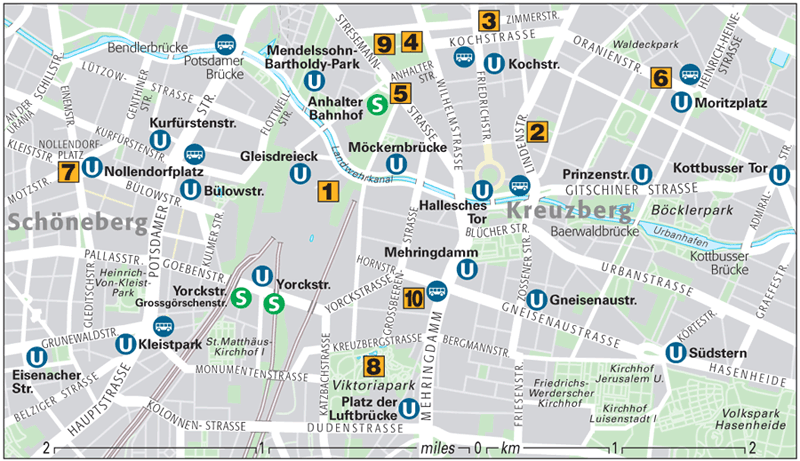
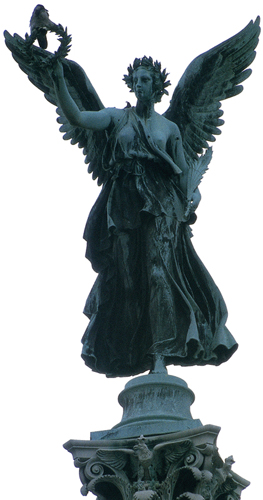
Top 10 SightsDeutsches Technikmuseum The
history of technology and crafts is the theme of this fascinating
museum, located in the grounds of a former station. Visitors can learn
about developments in aviation and admire 40 planes, including a Junkers
Ju 52 and a “raisin bomber”, the type of plane used for the Berlin
airlift. Old ships and steam locomotives bring back the days of the
Industrial Revolution. Trebbiner Str. 9 9am–5:30pm Tue–Fri, 10am–6pm Sat, Sun 030 90 25 40 Admission charge (free for children after 3pm)
Jüdisches Museum The
Jewish Museum is not only unique architecturally, but it is also one of
Berlin’s most fascinating museums. Its collections present an overview
of almost 1,000 years of German-Jewish cultural history; a special
exhibition is devoted to everyday Jewish life in Berlin from the end of
the 19th century .
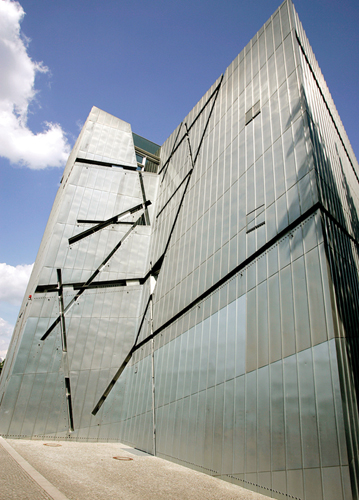
Checkpoint Charlie The
Haus am Checkpoint Charlie, next to the former crossing point for the
Alllied forces, has an exhibition on the history of the Berlin Wall and
the various means people used in trying to escape from East to West
Berlin, ranging from a hot-air balloon to a car with a false floor. Only
a replica of the control hut remains of the former border. Friedrichstr. 43–45 9am–10pm daily 030 253 72 50 Admission charge
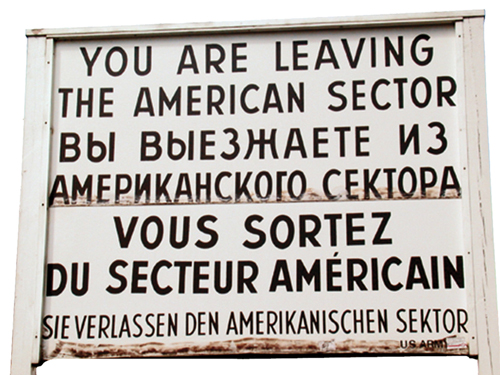
The old sign at Checkpoint Charlie
Topographie des Terrors After
1934, three terrifying Nazi institutions had their headquarters in this
area: the security service (Sicherheitsdienst, SD) was based at
Wilhelmstraße 102 in the Prinz-Albrecht-Palais; the school of arts and
crafts at Prinz-Albrecht-Straße 8 was occupied by the Gestapo; while
Heinrich Himmler, head of the SS, resided next door at No. 9, at the
Hotel Prinz Albrecht. After World War II, all the buildings were
bulldozed except for the cellars where, in 1933–45, prisoners had been
interrogated and tortured. An exhibition charts the history of the area
and a documentation centre opens in 2010.
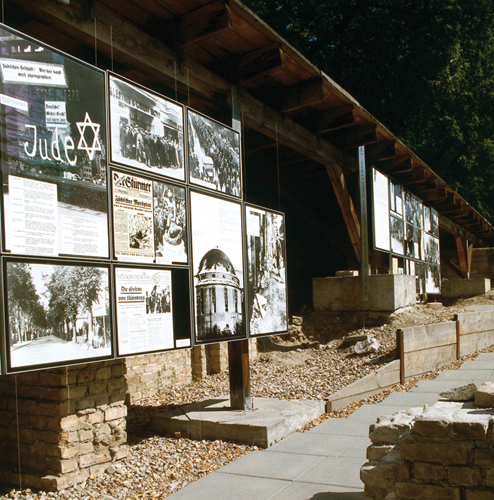
Exhibition of Nazi crimes at Topographie des Terrors
Anhalter Bahnhof Only
pitiful fragments remain of the railway station that was once the
largest in Europe. The giant structure was erected in 1880 by Franz
Schwechten as a showcase station: official visitors to the Empire were
meant to be impressed by the splendour and glory of the German capital
as soon as they reached the railway station. In 1943 the station was
badly damaged by bombs and in 1960 it was pulled down. The waste ground
behind the façade was meant to become a park; today the Tempodrom is
based here, hosting concerts and cabaret shows. Oranienstraße Oranienstraße
is the heart of Kreuzberg. It is the wildest, most colourful and most
unusual street of the district, where alternative shops and pubs jostle
for space with doner kebab take-aways and Turkish greengrocers. All
aspects of life and politics in Kreuzberg are centred around this road.
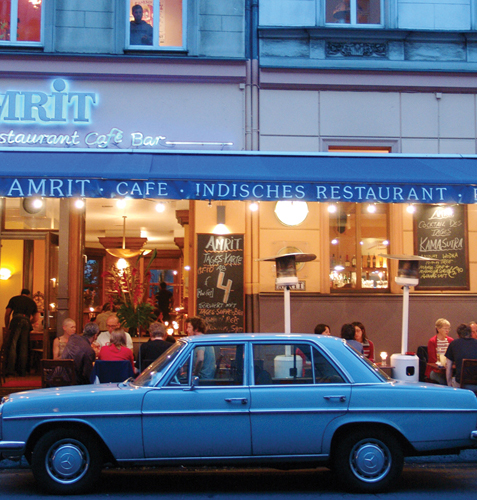
Nollendorfplatz Nollendorfplatz
and neighbouring Winterfeldtplatz are right in the centre of
Schöneberg. The former square has always been a focal point for the gay
scene in Berlin, and a plaque at U-Bahn station Nollendorfplatz
commemorates approximately 5,000 homosexuals killed in concentration
camps by the Nazis. Today, gay life is concentrated more in the
surrounding streets. Before World War II, Nollendorfplatz was also a
centre of entertainment. The Metropol-Theater, today a discotheque, then
boasted Erwin Piscator as its innovative director. And next door lived
the writer Christopher Isherwood, whose novel formed the basis of the
famous musical “Cabaret”.
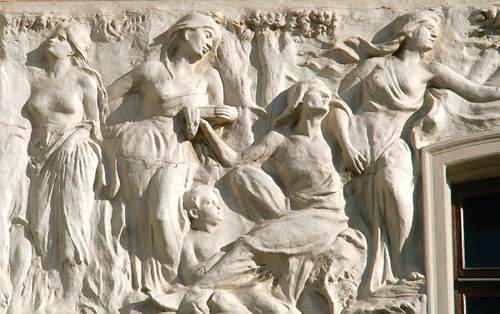
Façade of the Metropol
Viktoriapark This
rambling park was set up as a recreational space for workers in
Kreuzberg in 1888–94 to plans by Hermann Mächtig. It has an artificial
waterfall, and the Neo-Gothic Schinkel memorial at the top of Kreuzberg,
66 m (216 ft) high, commemorates Prussian victory in the Wars of
Liberation against Napoleon.

Memorial by Schinkel in Viktoriapark
Martin-Gropius-Bau The richly ornamented former museum of arts and crafts is one of Berlin’s most attractive exhibition centres .
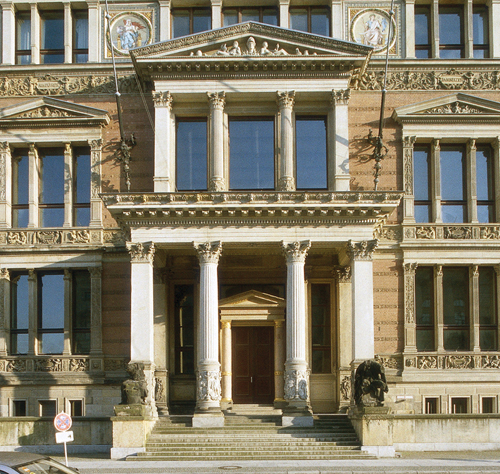
Martin-Gropius-Bau
Riehmers Hofgarten Over
20 buildings make up this elegant estate, built as officers’ quarters
in the Gründerzeit (after the founding of the German Empire in 1871).
Attractively restored in recent years, there is also a pleasant hotel
with restaurant.
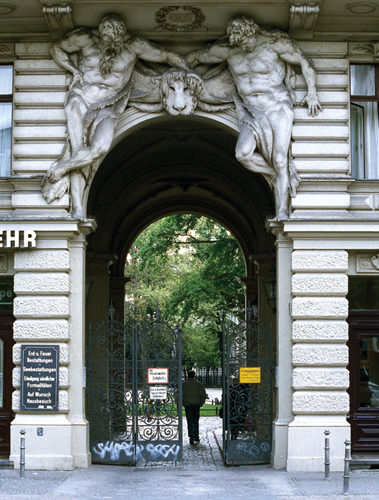
Riehmers Hofgarten
|